How to properly glue wallpaper on the ceiling: technology and recommendations
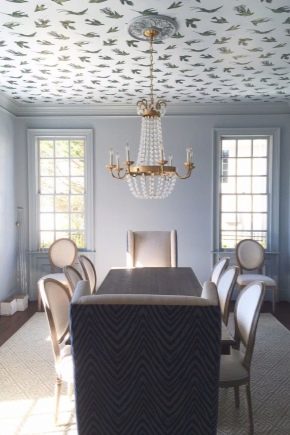
Ceiling wallpaper is considered one of the most popular types of modern decoration. They emphasize the interior of the room, filling it with notes of sophistication and chic. Today, this material is in great demand in design, as it allows you to give a room a new life with minimal financial costs. In addition, wallpaper gluing is not a complicated process, and therefore everyone can do it. To do this, it is enough to purchase high-quality canvases and correctly perform the work technology.
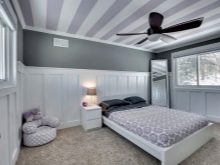
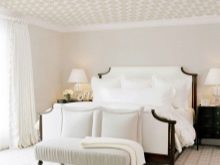

How to choose the right one?
The main point when decorating the ceiling with wallpaper is the choice of material. Recently, the construction market has been represented by a chic assortment of canvases that amaze with a variety of textures and shades.
To make the design of the room look unusual, it is worth purchasing ceiling wallpaper not only in a beautiful color, but also with the possibility of additional finishing or painting.
Traditionally, decorative items of several types are used for this, but they must be marked "for ceilings".
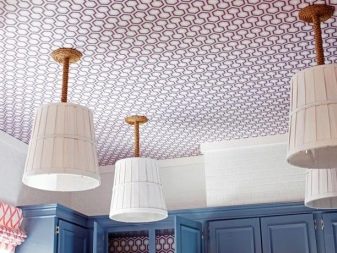
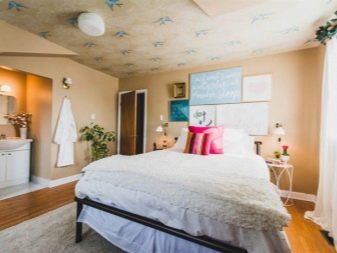
Non-woven canvases are considered an ideal option for this design. They are characterized by increased strength, protect the surface from cracking and are well suited for plasterboard substrates. As for the color palette, it is determined based on the characteristics of the room in which gluing is planned. In this case, it is important to consider the style of the interior, wall decoration and flooring. So, for example, in brick or panel houses, the ceilings are low, so it is recommended to use pastel shades for them in the ceiling decoration, since bright and dark colors will make the space uncomfortable and cold.

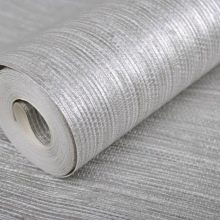
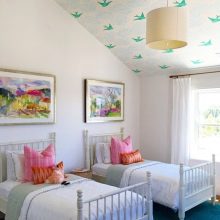
When buying paintings, you should also pay attention to their drawing or composition. Designers advise to abandon coatings with lurid ornaments altogether in favor of textured and embossed surfaces. Wallpaper with a natural imitation of wood, plant weaving and natural materials looks original on the ceiling. In addition, such canvases, if desired, can be repainted in any color. Painting is usually done with a water-dispersion emulsion, thanks to which the color change procedure is possible up to ten times.
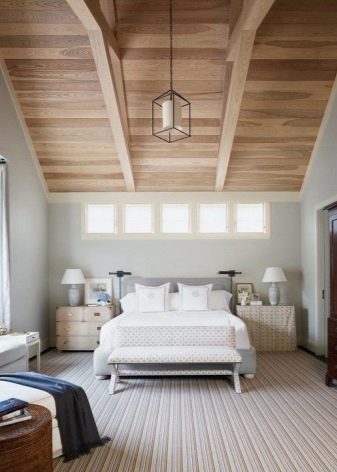
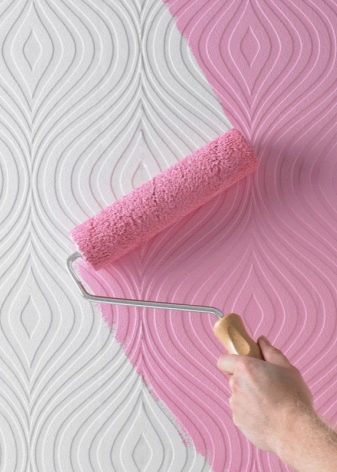
Surface preparation
Ceiling wallpaper, unlike wall wallpaper, is heavy and has a high density. Therefore, not only the aesthetic appearance of the canvases is important for them, but also the correct adherence to the rules of gluing, on which the service life will depend. In order for the wallpaper to hold well, you need to carefully prepare the surface of the ceiling, for this it must be cleaned and leveled. Such a procedure will help improve adhesion and make the substrate antiseptic.
Pasting the ceiling can only begin if the following types of work have been previously performed:
- Cleaning the surface from old layers of finishing.
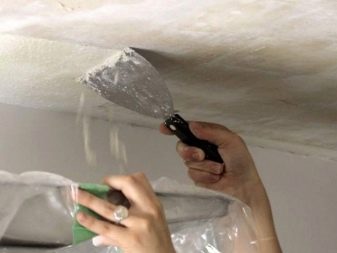
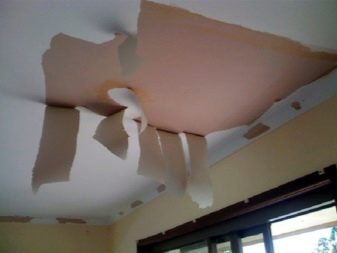
- Repair. It involves the elimination of potholes and large defects on the ceiling.
- Primer. It must be carried out without fail, as it will protect the base from mold, mildew and improve adhesion.
- Reinforcement of the surface with glass cloth.
- Putting and sanding. Provides the ceiling with perfect smoothness and hides all minor irregularities.
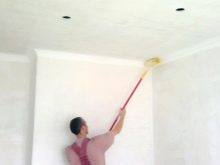
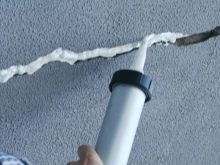
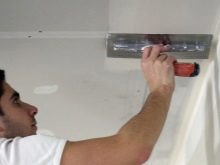
In addition, all furniture should be removed from the room where wallpaper is planned to be glued, chandeliers, carpets, curtains should be removed, the room should be de-energized and the doorways should be closed with foil.
It will be difficult to decorate the ceiling yourself, so you should think over all the details of the work in advance and find yourself an assistant.
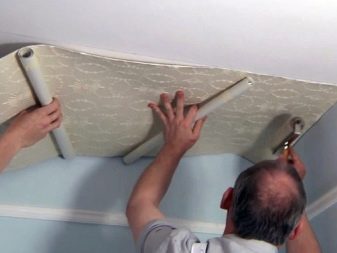
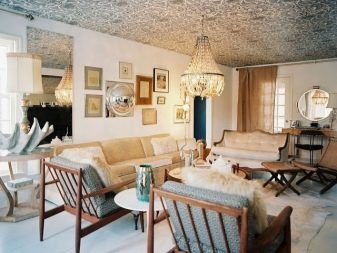
The technique of preparing the ceiling depends on the type of the previous coating, therefore it can be performed as follows:
- Whitewash removal. If there is a layer of chalk on the surface, it can be easily washed off with water. As for lime, it is considered an aggressive substance and is removed only with the help of special solutions, which include glue and laundry soap.
- Removing old paint. Oil layers are removed by degreasing. A solvent or alcohol is suitable for this. If there are residues of other types of paint on the ceiling, then technical washes are used and removed with a spatula.
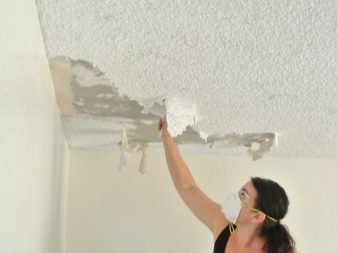
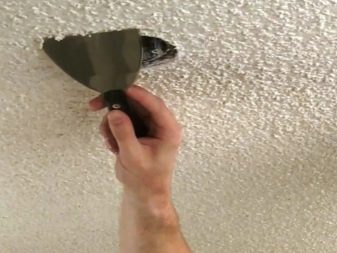
- Clearing previous wallpaper. It is enough to moisten the base with warm water and clean it.
- Often, after washing off the ceiling, stains can be found on its surface. As a rule, these are traces of rust or fungus. If they are available, it is impossible to start gluing the wallpaper, since stains will eventually appear on the new finish. Therefore, the base is initially treated with an antiseptic primer, then the rust is cleaned with a solution of copper sulfate.
Of course, a wooden ceiling or drywall is considered ideal for wallpapering, but sometimes a traditional surface of concrete slabs is found. It can have large potholes and cracks. To eliminate such flaws, it is necessary to apply a layer of plaster completely over the entire area of the base.
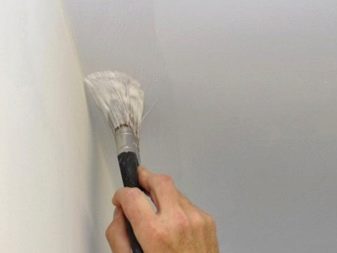

How to calculate the quantity?
Ceiling decoration should begin with the correct counting of materials, since their lack during gluing will give many negative consequences. So, for example, it will not be easy to buy similar wallpapers, and a new batch may differ significantly from the previous one in color and texture. Therefore, you need to have information about the number of rolls in advance. If a few years ago canvases were made according to standard sizes of 0.5 * 10 meters, today many manufacturers have presented non-format products.
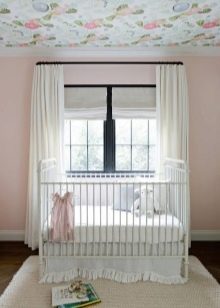
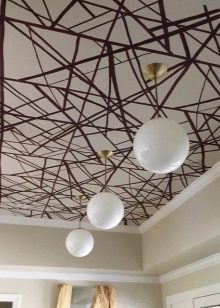
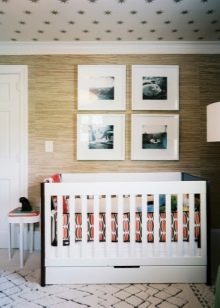
To facilitate the process of gluing the ceiling, use the following types of wallpaper:
- 0.53 * 12 meters. The most common rolls on sale. These are, as a rule, paper and fabric wallpapers.
- 0.74 * 10 meters. Products made in Great Britain and Italy.
- 1.06 * 25 meters. Meter canvases based on non-woven fabric.
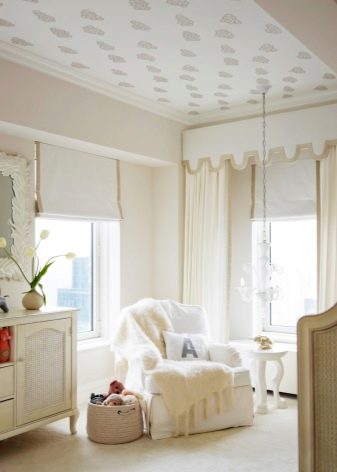
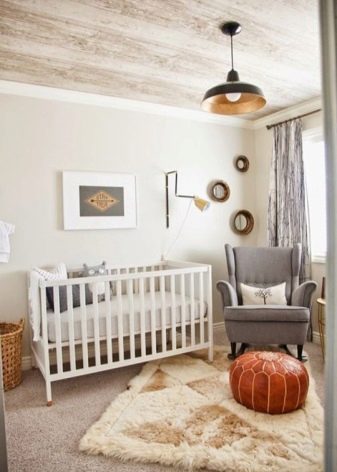
To calculate the material, you will first need to find out the area of the roll, which you can paste over the ceiling. To do this, the length of the product is multiplied by its width. You also need to pay attention to the shape of the room. If it is not rectangular and has many niches, protrusions, then you will have to additionally purchase wallpaper. If canvases with an ornament and a pattern are still chosen for finishing the ceiling, then you need to calculate the length of the repeating composition and add it to the length of the ceiling.
For decoration with a pattern, many rolls are required, since there will be cuttings during the gluing process. If you do not follow the ornament, then the surface will not turn out to be aesthetic.

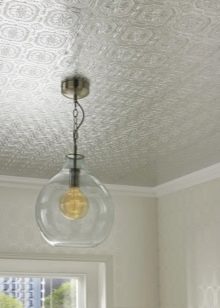
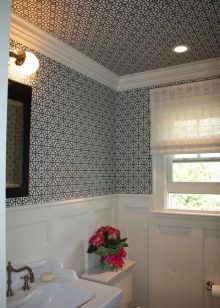
Materials and tools
Decorating the ceiling with wallpaper, like any other type of construction work, cannot be imagined without the availability of the appropriate tools. Before starting pasting, it is important to think over all the details, including the choice of quality materials, design technology and, of course, prepare everything you need to carry out the "creative process" itself. Typically, a traditional toolbox consists of the following items:
- Joiner's pencil. It is used to mark canvases. It is not recommended to use ballpoint pens and markers for these purposes, as they can appear on the outside of the wallpaper.
- Ruler. Thanks to her, it is convenient to draw straight lines.

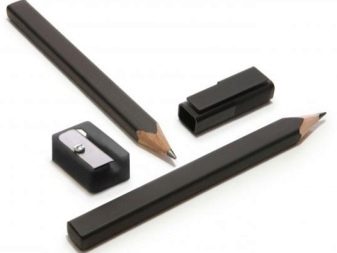
- Stationery knife. Helps to quickly cut wallpaper, trim canvases in the corners.
- Scissors. They are used to trim canvases in inaccessible places.
- Construction tape. Allows you to correctly measure the area and length of the strips.

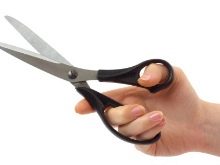

- Square.
- Level.
- Container for glue.

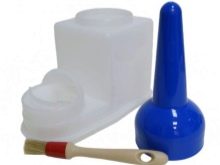
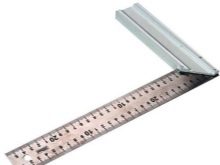
- Wallpaper brush.
- Construction mixer.
- Putty knife. Used for trimming wallpaper at the seams.



- Roller. Helps smooth streaks and expels air bubbles well.
In addition, the work will also need wet and dry rags, washcloths, mops and brushes.
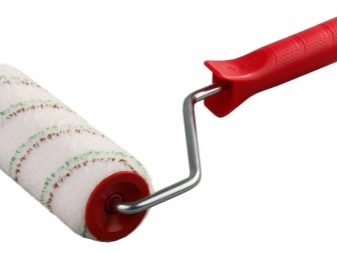
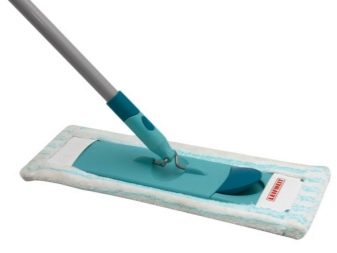
How to glue: technology description
The method of gluing ceiling wallpaper depends on the type of canvases, since they differ in their structure and density. It is worth noting immediately that it is not possible to paste over this surface in a room alone. Therefore, if you plan to decorate the ceiling with your own hands without hiring craftsmen, first of all you need to independently calculate the material consumption, plan the stages of work and find reliable assistants.



It is worth starting the process with preliminary surface preparation. As for the gluing technology, it is different for each wallpaper and is carried out as follows:
Non-woven wallpaper
They are material in rolls, which consists of two layers - polymer coating and non-woven fabric. They are durable in use, breathe well and do not absorb odors. Before using them, the ceiling is thoroughly cleaned of dirt and old surface, then the base is primed and putty. The work area must be firm, dry, level and solid.
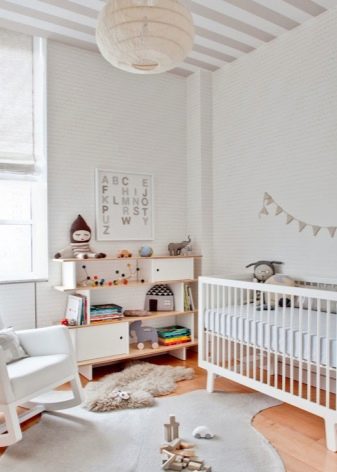
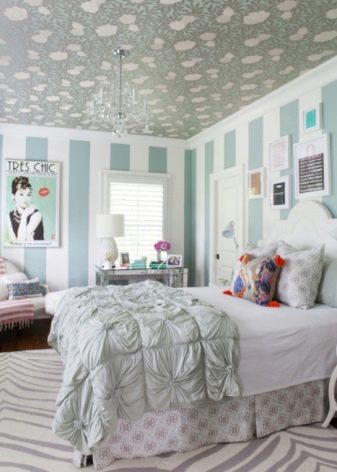
The canvases are measured and cut into strips with a small margin of 10 cm. For products with a pattern, it is important to take into account the height of the report. All cuts must be numbered and glued sequentially. Sometimes such wallpapers are fixed in the reverse method.
There should be no drafts in the room where the work is taking place.
In this case, the glue is applied only to the ceiling, and it is recommended to treat the strips with a special solution that will protect them from the formation of mold and mildew.
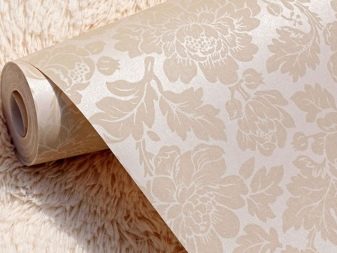
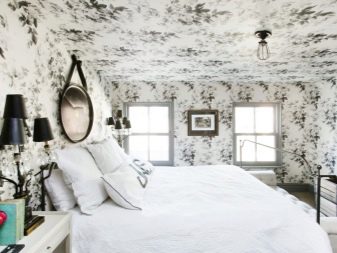
Vinyl wallpapers
They are glued similarly to non-woven ones on a previously prepared ceiling, the pattern on the stripes should match as much as possible. The cut strips are stacked on top of each other. Moreover, their number should not exceed 10 pieces. The glue is applied both to the base itself and to the wallpaper, the swelling time is indicated on the rolls.
It is best to start pasting from the corner. It is important to ensure that the strips are attached end-to-end and that no glue gets on the upper side of the canvases. The remaining material should be cut off with a knife and blotted with a dry cloth.
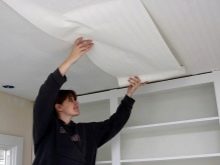
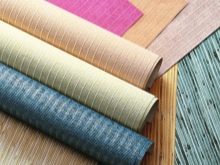
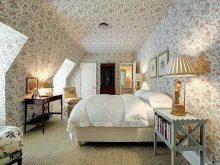
Paper wallpaper
This type of product is fixed to the ceiling in two ways - without overlap and end-to-end. If the canvases are glued along the direction of the room, the number of seams will be minimal, but the process itself will be laborious and complex. As for pasting in width, it is much easier to do and resembles working with wall decoration. The glue is applied both to the ceiling and to the canvases. In order to facilitate the supply of the impregnated sheet to the surface, it is recommended to fold it on the floor in the form of an accordion.
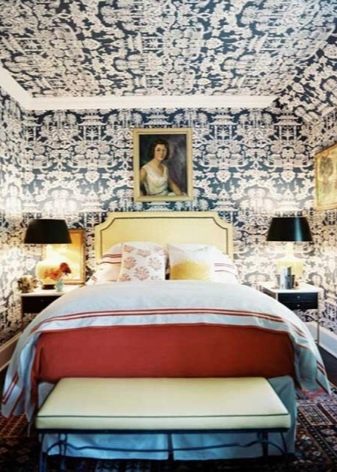
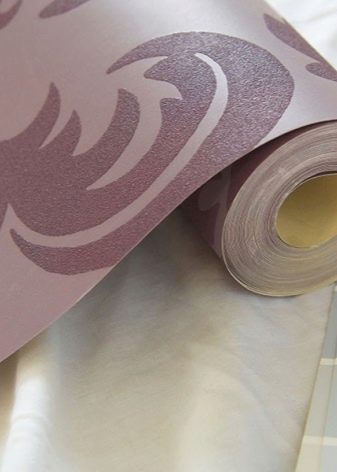
Can I be glued to tiles?
In some cases, when pasting wallpaper, you may encounter such a problem as the presence of decorative tiles on the ceiling. It is a porous material that provides excellent thermal insulation. The surface of such a tile is even, so it is not an obstacle for the gluing of the canvases.
The only thing that will be required before covering it is to perform the following preparatory work:
- Removing previous layers of putty and finishing.
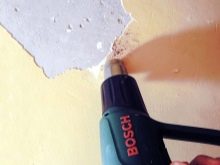

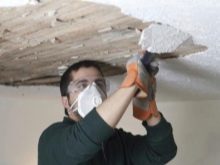
- Ceiling treatment with a primer.
- Leveling the base with plaster-based mixtures.
This option is only possible if the tile is made of polystyrene. Glueing wallpaper is not recommended with other products, as a chemical reaction with glue is possible.
Sometimes there may be small gaps between the tiles, they can be easily removed with putty and acrylic primer.
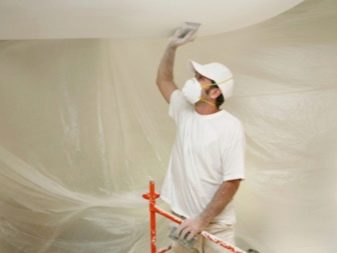
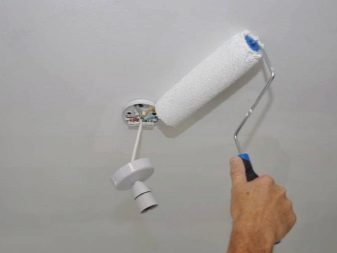
Important points
The main task when pasting wallpaper on the ceiling is considered to be their reliable fixing, otherwise all the work can go down the drain.Therefore, first of all, it is worth worrying about the preparation of the ceiling surface. To prevent the strips from peeling off, they need to be "planted" on high-quality glue, observing all work technologies.
Recently, interior designers have been using tension structures in combination with decorative canvases. They look beautiful and unusual. If the room has walls rounded at the corners, they can be decorated in an original way. For this, two types of baguettes are suitable - made of plastic or natural material. First, it is worth sticking the wallpaper, and then, after they have completely dried, attach the decor elements.

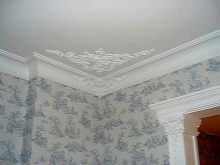

It will be difficult to glue the ceiling alone, so it is recommended to use additional help. If the gluing takes place in splendid isolation, then you should not be upset; to simplify this process, the canvases on the floor must be folded with an accordion, and then carefully leveled on the ceiling. At the end of the work, the room must not be ventilated for at least 10 hours.
You will learn how to properly glue wallpaper to the ceiling in the following video.













The comment was sent successfully.